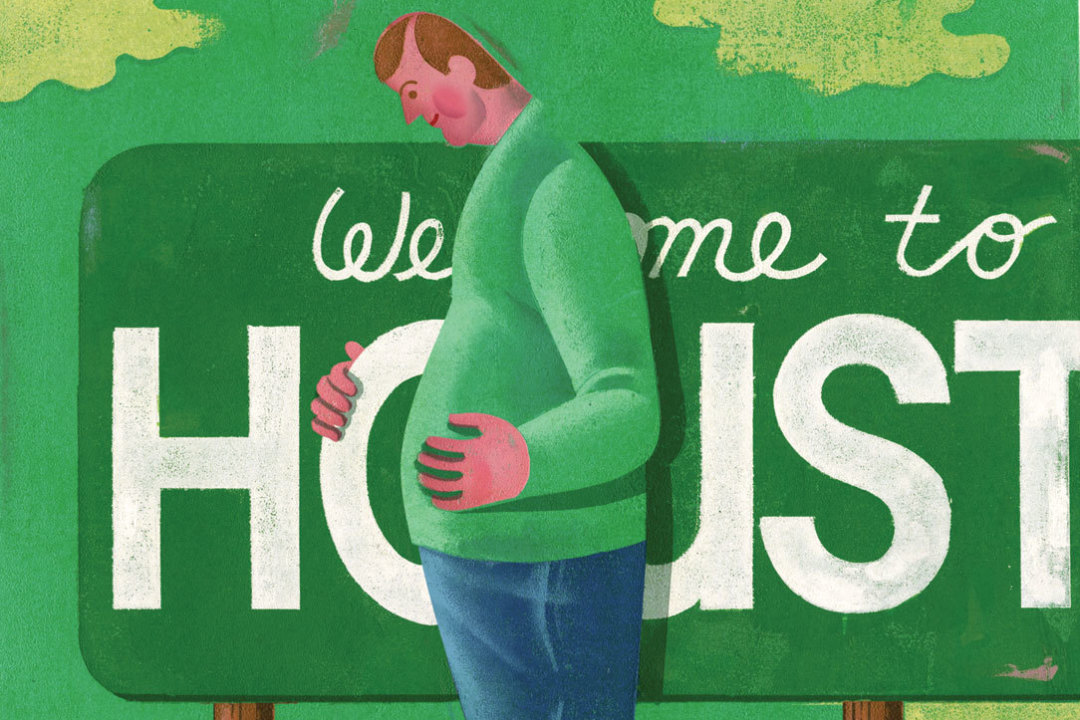Just How Fat Are We?

Image: Peter Ryan
It’s mid-winter, which means it must be time for the swamis over at Men’s Fitness and Men’s Health magazines to make Houstonians feel like crap. Every year since 1999, at about this time, one of the two publications, if not both, has turned its attention from its usual passions—flat abs, the pros and cons of paleo—to a serious, or at least half-serious consideration of which are the fattest and fittest cities in the country. Such material is like so much catnip to the national and local media, who endlessly report and re-report the mags’ findings until finally they come to be seen as received wisdom. Thus do the residents of Portland, Oregon think of themselves as hale and hearty even though the rain keeps them indoors 9 months out of 12, and Houstonians are filled with self-loathing.
“I wouldn’t expect anything less from one of the fattest cities in America,” wrote someone on the Houston forum at city-data.com, referring not to our city’s long commutes or air quality but how much money had been raised for charity by Houston Restaurant Weeks. “Houston is the fattest city in the country, so I’m hoping to live somewhere to not see much of that,” wrote someone contemplating an impending move. “OPEN YOUR EYES and LOOK AROUND,” screamed a third. “Houston has one of the highest percentages of fat people I've ever seen.”
All this because two magazines with offices in New York City, that bastion of health, decided to rank cities according to things like “relative humidity” (Men’s Health), “general wellbeing” (Men’s Fitness), and other rubrics of dubious reliability. In consequence, Houston was named America’s fattest city by the latter for three straight years starting in 2001, and again in 2012, and 31st healthiest city (out of 50) last year. Men’s Health, meanwhile, named us ninth fattest in 2011, and on and on.
But here’s the thing: they’re both wrong, dead wrong. To borrow a line from local rapper Fat Tony (a skinny guy who, like his city, doesn’t quite live up to the label): Houston, you ain’t fat. Or at least not as fat as you’ve been told.
Would that the fitness magazines spent less time counting fast food outlets and more time consulting cold, hard facts—such as these: Houstonians are in better shape than their counterparts in Dallas, San Antonio, and Fort Worth, according to 2011 data from the Centers for Disease Control (the most recent available). Better even than Austin. And certainly better than poor El Paso, which according to the CDC is one of the most overweight cities in the entire nation.
The agency, by the way, has been gathering data since 1984, conducting phone interviews with over 500,000 Americans each year, the largest health survey in the world. Respondents are typically asked whether they’re diabetic, smokers, or binge drinkers, and if they consider themselves healthy, overweight, or obese. (The data doesn’t drill down into individual cities, instead concentrating on Metropolitan Statistical Areas, in our case the 6.3 million people in the nine counties known collectively as Houston–Sugar Land–Baytown.)
Forty percent of us self-reported to the CDC as healthy, for instance, compared to only 36 percent of Austinites, which put a smile on our face even after a helpful wonk at the Texas Department of State Health Services tried to tell us that such results were statistically insignificant.
“If you look at the original source of the data you will notice that the confidence intervals overlap,” noted TDSHS press officer Christine Mann. “In other words, the Austin MSA and Houston MSA are statistically the same.” Statistically the same to the CDC, maybe. To us, the news seemed worthy of a cruel press release trumpeting Houston’s victory over its breakfast taco and barbecue–logged neighbors to the west.
And while we’re issuing releases, why not send out another one to disabuse East Coast magazine editors of their prejudices once and for all? What is general wellbeing, after all, if not a city in which you don’t have to wait until the summer to enjoy the great outdoors; a city which will soon have the country’s largest system of bike trails; a city with nearly 200 CrossFit boxes for devotees to flip tires and execute a mean set of burpees; a city where socialites create wildly successful charities aimed at teaching children how to grow and cook their own food; a city whose farmers markets and health food stores are as packed as its malls; a city whose mayor often shuts down long stretches of main thoroughfares in order to encourage bicyclists and pedestrians to take back the streets. And yes, a city that’s the healthiest, least overweight in Texas—a city whose health rankings are on par with those of Portland and Los Angeles.
To be sure, we aren’t yet one of the fittest cities either, but rather solidly in the middle of the pack, behind DC and Chicago, but ahead of Atlanta, Phoenix, and Miami, says the CDC. But that’s still quite a distinction, especially when you consider that Houston has over 11,000 restaurants and its residents dine out more than those of any other city, according to Zagat (although now we’re starting to wonder about that claim too).
Be that as it may, here’s to Houstonians going back to what they do best: defining themselves. And to fitness magazines going back to what they do best—which is what, exactly?




